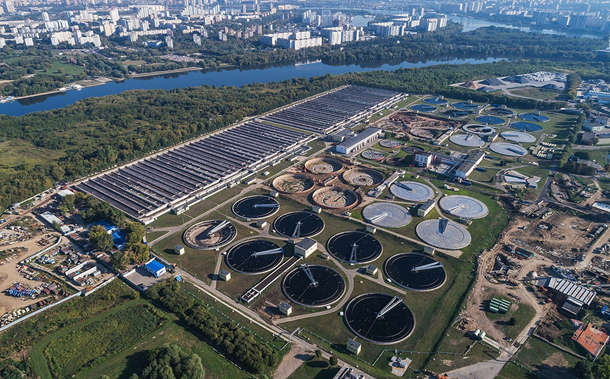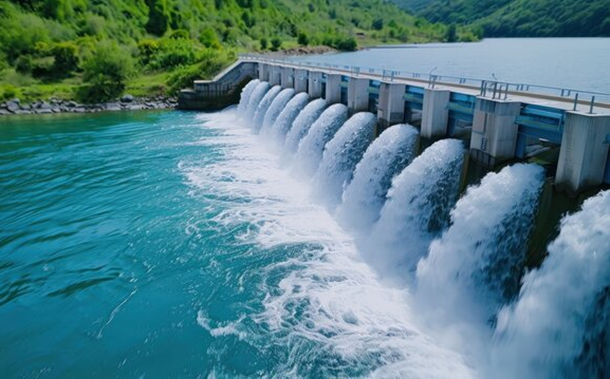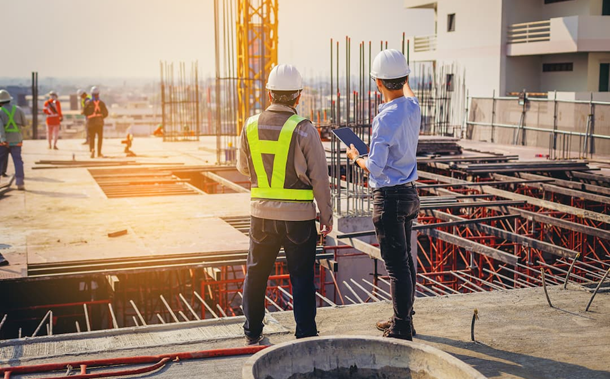Renewable Energy Approach with Indonesian Regulation Guide Uses Blockchain-BIM to Green Cost Performance
Downloads
Doi:10.28991/CEJ-2023-09-10-09
Full Text:PDF
Downloads
[2] Le, D. L., Nguyen, T. Q., & Huu, K. Do. (2021). Life cycle carbon dioxide emissions assessment in the design phase: A case of a green building in Vietnam. Engineering Journal, 25(7), 121–133. doi:10.4186/ej.2021.25.7.121.
[3] Benamer, W. H., Elberkawi, E. K., Neihum, N. A., Anwiji, A. S., & Youns, M. A. (2021). Green Computing case study: calls for proposing solutions for the Arabian Gulf Oil Company. E3S Web of Conferences, 229, 01063. doi:10.1051/e3sconf/202122901063.
[4] Besana, D., & Tirelli, D. (2022). Reuse and Retrofitting Strategies for a Net Zero Carbon Building in Milan: An Analytic Evaluation. Sustainability (Switzerland), 14(23). doi:10.3390/su142316115.
[5] Darko, A., Zhang, C., & Chan, A. P. C. (2017). Drivers for green building: A review of empirical studies. Habitat International, 60, 34–49. doi:10.1016/j.habitatint.2016.12.007.
[6] Sutikno, S., Husin, A. E., & Yuliati, M. M. E. (2022). Using PLS-SEM to analyze the criteria for the optimum cost of green MICE projects in Indonesia based on value engineering and lifecycle cost analysis. (2023). Archives of Civil Engineering. doi:10.24425/ace.2022.143054.
[7] Dwaikat, L. N., & Ali, K. N. (2018). The economic benefits of a green building – Evidence from Malaysia. Journal of Building Engineering, 18(April), 448–453. doi:10.1016/j.jobe.2018.04.017.
[8] Nejad, J. E. D. M., & Asadpour, F. (2019). A strategy for sustainable development: Using nanotechnology for solar energy in buildings (case study Parand town). Journal of Engineering and Technological Sciences, 51(1), 103–120. doi:10.5614/j.eng.technol.sci.2019.51.1.7.
[9] Rochman, S., & Hermawan, A. (2022). Design and Construction of Screw Type Micro Hydro Power Plant. BEST: Journal of Applied Electrical, Science, & Technology, 4(1), 21–26. doi:10.36456/best.vol4.no1.5444.
[10] Novara, D., Carravetta, A., McNabola, A., & Ramos, H. M. (2019). Cost Model for Pumps as Turbines in Run-of-River and In-Pipe Microhydropower Applications. Journal of Water Resources Planning and Management, 145(5), 1–9. doi:10.1061/(asce)wr.1943-5452.0001063.
[11] Shayan, M. E., Najafi, G., Ghobadian, B., Gorjian, S., & Mazlan, M. (2022). Sustainable Design of a Near-Zero-Emissions Building Assisted by a Smart Hybrid Renewable Microgrid. International Journal of Renewable Energy Development, 11(2), 471–480. doi:10.14710/ijred.2022.43838.
[12] Gunjan, V. K., Singh, S. N., Duc-Tan, T., Rincon Aponte, G. J., & Kumar, A. (Eds.). (2020). ICRRM 2019 – System Reliability, Quality Control, Safety, Maintenance and Management. doi:10.1007/978-981-13-8507-0.
[13] Dwaikat, L. N., & Ali, K. N. (2016). Green buildings cost premium: A review of empirical evidence. Energy and Buildings, 110, 396–403. doi:10.1016/j.enbuild.2015.11.021.
[14] Hwang, B. G., Zhu, L., Wang, Y., & Cheong, X. (2017). Green Building Construction Projects in Singapore: Cost Premiums and Cost Performance. Project Management Journal, 48(4), 67–79. doi:10.1177/875697281704800406.
[15] Hu, M., & Skibniewski, M. (2021). Green Building Construction Cost Surcharge: An Overview. Journal of Architectural Engineering, 27(4). doi:10.1061/(asce)ae.1943-5568.0000506.
[16] Du, X., Zhang, Y., & Lv, Z. (2020). Investigations and analysis of indoor environment quality of green and conventional shopping mall buildings based on customers' perception. Building and Environment, 177(April), 106851. doi:10.1016/j.buildenv.2020.106851.
[17] Liu, Z., Jiang, L., Osmani, M., & Demian, P. (2019). Building information management (BIM) and blockchain (BC) for sustainable building design information management framework. Electronics (Switzerland), 8(7), 1–15. doi:10.3390/electronics8070724.
[18] Kfoury, B. (2021). The role of blockchain in reducing the cost of financial transactions in the retail industry. WCNC-2021: Workshop on Computer Networks & Communications, 1 May, 2021, Chennai, India.
[19] Abdel-Galil, E., Ibrahim, A. H., & Alborkan, A. (2022). Assessment of transaction costs for construction projects. International Journal of Construction Management, 22(9), 1618–1631. doi:10.1080/15623599.2020.1738204.
[20] Zheng, R., Jiang, J., Hao, X., Ren, W., Xiong, F., & Ren, Y. (2019). BcBIM: A Blockchain-Based Big Data Model for BIM Modification Audit and Provenance in Mobile Cloud. Mathematical Problems in Engineering, 2019. doi:10.1155/2019/5349538.
[21] Celik, Y., Petri, I., & Barati, M. (2023). Blockchain supported BIM data provenance for construction projects. Computers in Industry, 144, 103768. doi:10.1016/j.compind.2022.103768.
[22] Sreckovic, M., Sibenik, G., Breitfuß, D., & Preindl, T. (2020). Analysis of Design Phase Processes with BIM for Blockchain Implementation. SSRN Electronic Journal. doi:10.2139/ssrn.3577529.
[23] Haruna, A., Shafiq, N., Ali, M. O., Mohammed, M., & Haruna, S. (2020). Design and construction technique for low embodied energy building: An analytical network process approach. Journal of Engineering and Technological Sciences, 52(2), 166–180. doi:10.5614/j.eng.technol.sci.2020.52.2.3.
[24] Harani, S. A. P. (2022). Analysis of Building Integrated Photovoltaic Application for Apartment Building in Jakarta. Jurnal Inovasi Konstruksi, 1(1), 25–31. doi:10.56911/jik.v1i1.8.
[25] Husin, A. E., Karolina, T., Rahmawati, D. I., & Abdillah, C. F. (2022). Increasing Value of Façade at Green Hotel Building Based on Value Engineering. The Open Civil Engineering Journal, 15(1), 398–405. doi:10.2174/1874149502115010398.
[26] Syahputra, R., & Soesanti, I. (2021). Renewable energy systems based on micro-hydro and solar photovoltaic for rural areas: A case study in Yogyakarta, Indonesia. Energy Reports, 7, 472–490. doi:10.1016/j.egyr.2021.01.015.
[27] Olanrewaju, O., Ajiboye Babarinde, S., & Salihu, C. (2020). Current State of Building Information Modelling in the Nigerian Construction Industry. Journal of Sustainable Architecture and Civil Engineering, 27(2), 63–77. doi:10.5755/j01.sace.27.2.25142.
[28] Niraula, N. (2020). Application of BIM in Nepal. Bachelor Thesis, Metropolia University of Applied Sciences, Helsinki, Finland.
[29] Republic of Indonesia (2022). Circular Letter of Minister of Public Work and Public Housing No.01/SE/M/2022 about Technical Guideline for Green Building Performance Assessment. Jakarta. Available online: https://www.ojk.go.id/keuanganberkelanjutan/ en/regulation/detailregulation/2939/surat-edaran-nomor-01-se-m-2022-tentang-petunjuk-teknis-penilaian-kinerja-bangunan-gedung-hijau (accessed on June 2023).
[30] Pedroza, A. (2019). Potentials of Blockchain application in BIM: An effective solution to complex data management and reliability of information on big AEC projects. Master Thesis, University College London, London, United Kingdom.
[31] Baig, F., & Wang, F. (2019). Blockchain Enabled Distributed Data Management - A Vision. 2019 IEEE 35th International Conference on Data Engineering Workshops (ICDEW), Macao, China. doi:10.1109/icdew.2019.00-39.
[32] Akbarieh, A., Carbone, W., Schäfer, M., Waldmann, D., & Teferle, F. N. (2020). Extended Producer Responsibility in the Construction Sector through Blockchain, BIM and Smart Contract Technologies. World Congress on Sustainable Technologies (WCST-2020), London, United Kingdom. doi:10.20533/wcst.2020.0004.
[33] Li, X., Lu, W., Xue, F., Wu, L., Zhao, R., Lou, J., & Xu, J. (2022). Blockchain-Enabled IoT-BIM Platform for Supply Chain Management in Modular Construction. Journal of Construction Engineering and Management, 148(2), 04021195. doi:10.1061/(asce)co.1943-7862.0002229.
[34] Ni, Y., Sun, B., & Wang, Y. (2021). Blockchain-Based BIM Digital Project Management Mechanism Research. IEEE Access, 9, 161342–161351. doi:10.1109/ACCESS.2021.3130270.
[35] Zhao, R., Chen, Z., & Xue, F. (2023). A blockchain 3.0 paradigm for digital twins in construction project management. Automation in Construction, 145, 104645. doi:10.1016/j.autcon.2022.104645.
[36] Yuliatti, M. M. E., Husin, A. E., & Sutikno. (2022). Improved Performance of Toll Road Projects Based on System Dynamics Integrated Life Cycle Cost Analysis Green Retrofitting. Civil Engineering and Architecture, 10(6), 2713–2730. doi:10.13189/cea.2022.100635.
[37] Husin, A. E., & Kurniawan, I. (2023). Analisa Kinerja Biaya Green Pada Bangunan Utama Flour Mill Plant Berbasis Value Engineering Dan Life Cycle Cost Analysis. Jurnal Aplikasi Teknik Sipil, 21(1), 65. doi:10.12962/j2579-891x.v21i1.14988.
[38] Hair, J. F., Hult, G. T. M., Ringle, C. M., Sarstedt, M., Danks, N. P., & Ray, S. (2021). Partial Least Squares Structural Equation Modeling (PLS-SEM) Using R. Classroom Companion: Business, Springer, Berlin, Germany. doi:10.1007/978-3-030-80519-7.
[39] Vu-Ngoc, H., Elawady, S. S., Mehyar, G. M., Abdelhamid, A. H., Mattar, O. M., Halhouli, O., Vuong, N. L., Mohd Ali, C. D., Hassan, U. H., Kien, N. D., Hirayama, K., & Huy, N. T. (2018). Quality of flow diagram in systematic review and/or meta-analysis. PLoS ONE, 13(6), 1–16. doi:10.1371/journal.pone.0195955.
[40] Bhandari, S. R. (2023). A Comprehensive Study of Micro Hydro Plant and its Potential: A Case Study. Indonesian Journal of Electrical Engineering and Renewable Energy, 3(1), 18-28. doi:10.57152/ijeere.v3i1.478. (In Indonesian).
[41] Hatata, A. Y., El-Saadawi, M. M., & Saad, S. (2019). A feasibility study of small hydro power for selected locations in Egypt. Energy Strategy Reviews, 24, 300–313. doi:10.1016/j.esr.2019.04.013.
[42] Pérez, C., Ponce, P., Meier, A., Dorantes, L., Sandoval, J. O., Palma, J., & Molina, A. (2022). S4 Framework for the Integration of Solar Energy Systems in Small and Medium-Sized Manufacturing Companies in Mexico. Energies, 15(19). doi:10.3390/en15196882.
[43] Podder, A. K., Hasan, M. R., Roy, N. K., & Komol, M. M. R. (2018). Economic Analysis of a Grid Connected PV Systems: A Case Study in Khulna. European Journal of Engineering Research and Science, 3(7), 16. doi:10.24018/ejers.2018.3.7.795.
[44] Aziz, A. S., Tajuddin, M. F. N., Zidane, T. E. K., Su, C. L., Mas'ud, A. A., Alwazzan, M. J., & Alrubaie, A. J. K. (2022). Design and Optimization of a Grid-Connected Solar Energy System: Study in Iraq. Sustainability (Switzerland), 14(13), 1–29. doi:10.3390/su14138121.
[45] Lin, P. H., Chang, C. C., Lin, Y. H., & Lin, W. L. (2019). Green BIM assessment applying for energy consumption and comfort in the traditional public market: A case study. Sustainability (Switzerland), 11(17), 4636. doi:10.3390/su11174636.
[46] Ye, X. (2019). Combining BIM with smart contract and blockchain to support digital project delivery and acceptance processes. Master Thesis, Ruhr-Universität Bochum, Computational Engineering, Bochum, Germany.
[47] Al-Emran, M., Mezhuyev, V., & Kamaludin, A. (2019). PLS-SEM in Information Systems Research: A Comprehensive Methodological Reference. Proceedings of the International Conference on Advanced Intelligent Systems and Informatics 2018, AISI 2018. Advances in Intelligent Systems and Computing, 845. Springer, Cham, Switzerland. doi:10.1007/978-3-319-99010-1_59.
[48] Sarstedt, M., Ringle, C.M., Hair, J.F. (2022). Partial Least Squares Structural Equation Modeling. Handbook of Market Research. Springer, Cham, Switzerland. doi:10.1007/978-3-319-57413-4_15.
[49] Kiraz, A., Canpolat, O., Özkurt, C., & Taşkın, H. (2020). Analysis of the factors affecting the Industry 4.0 tendency with the structural equation model and an application. Computers and Industrial Engineering, 150, 106911. doi:10.1016/j.cie.2020.106911.
[50] Hair, J. F., Sarstedt, M., Hopkins, L., & Kuppelwieser, V. G. (2014). Partial least squares structural equation modeling (PLS-SEM): An emerging tool in business research. European Business Review, 26(2), 106–121. doi:10.1108/EBR-10-2013-0128.
[51] Sarwono, J. (2010). Basic understanding of structural equation modeling (SEM). Ukrida Business Management Scientific Journal, 10(3), 98528. (In Indonesian).
[52] Ghozali, I., & Latan, H. (2020). Partial Least Squares: Konsep, Teknik dan Aplikasi Menggunakan Program SmartPLS3.0 Edisi kedua Universitas Diponegoro, Semarang, Indonesia.
[53] Barman, S., & Bandyopadhyaya, R. (2020). Crash Severity Analysis for Low-Speed Roads Using Structural Equation Modeling Considering Shoulder- and Pavement-Distress Conditions. Journal of Transportation Engineering, Part A: Systems, 146(7), 1–10. doi:10.1061/jtepbs.0000373.
[54] Mostavi, E., Asadi, S., & Boussaa, D. (2018). Framework for Energy-Efficient Building Envelope Design Optimization Tool. Journal of Architectural Engineering, 24(2), 1–13. doi:10.1061/(asce)ae.1943-5568.0000309.
[55] Fan, Y., & Xia, X. (2017). A multi-objective optimization model for energy-efficiency building envelope retrofitting plan with rooftop PV system installation and maintenance. Applied Energy, 189, 327–335. doi:10.1016/j.apenergy.2016.12.077.
[56] Ascione, F., Bianco, N., Maria Mauro, G., & Napolitano, D. F. (2019). Building envelope design: Multi-objective optimization to minimize energy consumption, global cost and thermal discomfort. Application to different Italian climatic zones. Energy, 174, 359–374. doi:10.1016/j.energy.2019.02.182.
[57] Akram, M. W., Zublie, M. F. M., Hasanuzzaman, M., & Rahim, N. A. (2022). Global Prospects, Advance Technologies and Policies of Energy-Saving and Sustainable Building Systems: A Review. Sustainability (Switzerland), 14(3), 1–27. doi:10.3390/su14031316.
[58] Saghafi, S., Ebrahimi, A., Mehrdadi, N., & Nabi Bidhendy, G. (2020). Energy-Efficiency Index in Industrial Wastewater Treatment Plants Using Data-Envelopment Analysis. Journal of Environmental Engineering, 146(2), 1–7. doi:10.1061/(asce)ee.1943-7870.0001639.
[59] Patrick, D. R., Fardo, S. W., Richardson, R. E., & Fardo, B. W. (2020). Energy Conservation Guidebook, River Publishers, New York, United States. doi:10.1201/9781003151883.
[60] Lu, Y., Khan, Z. A., Alvarez-Alvarado, M. S., Zhang, Y., Huang, Z., & Imran, M. (2020). A Critical Review of Sustainable Energy Policies for the Promotion of Renewable Energy Sources. Sustainability, 12(12), 5078. doi:10.3390/su12125078.
[61] Prasetyawan, S., Machfudiyanto, R. A., & Rachmawati, T. S. N. (2023). Incentives and Barriers to Green Building Implementation: The Case of Jakarta. Journal of the Civil Engineering Forum, 287–302. doi:10.22146/jcef.7150.
[62] Ozorhon, B., & Karahan, U. (2017). Critical Success Factors of Building Information Modeling Implementation. Journal of Management in Engineering, 33(3), 505. doi:10.1061/(asce)me.1943-5479.0000505.
[63] Najjar, M. K., Tam, V. W., Di Gregorio, L. T., Evangelista, A. C. J., Hammad, A. W., & Haddad, A. (2019). Integrating parametric analysis with building information modeling to improve energy performance of construction projects. Energies, 12(8), 1515. doi:10.3390/en12081515.
[64] Mostafa, K., & Leite, F. (2018). Evolution of BIM Adoption and Implementation by the Construction Industry over the Past Decade: A Replication Study. Construction Research Congress 2018. doi:10.1061/9780784481264.018.
[65] Ershadi, M. J., Edrisabadi, R., & Shakouri, A. (2020). Strategic alignment of project management with health, safety and environmental management. Built Environment Project and Asset Management, 10(1), 78–93. doi:10.1108/BEPAM-03-2019-0023.
[66] Hidayah, S., & Husin, A. E. (2022). Faktor-Faktor yang Paling Berpengaruh pada Pekerjaan Retrofitting Rumah Sakit Berbasis Peraturan yang Berlaku di Indonesia. Jurnal Aplikasi Teknik Sipil, 20(3), 323. doi:10.12962/j2579-891x.v20i3.13258.
[67] Chen, L. sheng, Ding, Y., & Chen, L. (2021). Application of environmentally-friendly and energy-saving materials in building decoration. E3S Web of Conferences, 233, 03064. doi:10.1051/e3sconf/202123303064.
[68] Del Sole, A. (2021). Visual Studio Code Distilled. Apress Berkeley, Berkeley, United States. doi:10.1007/978-1-4842-6901-5.
[69] R, B., & Aithal, P. S. (2020). Blockchain based Service: A Case Study on IBM Blockchain Services & Hyperledger Fabric. International Journal of Case Studies in Business, IT, and Education, 94–102. doi:10.47992/ijcsbe.2581.6942.0064.
[70] Dwaikat, L. N., & Ali, K. N. (2018). Green buildings life cycle cost analysis and life cycle budget development: Practical applications. Journal of Building Engineering, 18, 303–311. doi:10.1016/j.jobe.2018.03.015.
[71] Basten, V., Latief, Y., Berawi, M. A., Riswanto, & Muliarto, H. (2018). Green Building Premium Cost Analysis in Indonesia Using Work Breakdown Structure Method. IOP Conference Series: Earth and Environmental Science, 124, 012004. doi:10.1088/1755-1315/124/1/012004.
- Authors retain all copyrights. It is noticeable that authors will not be forced to sign any copyright transfer agreements.
- This work (including HTML and PDF Files) is licensed under a Creative Commons Attribution 4.0 International License.![]()














